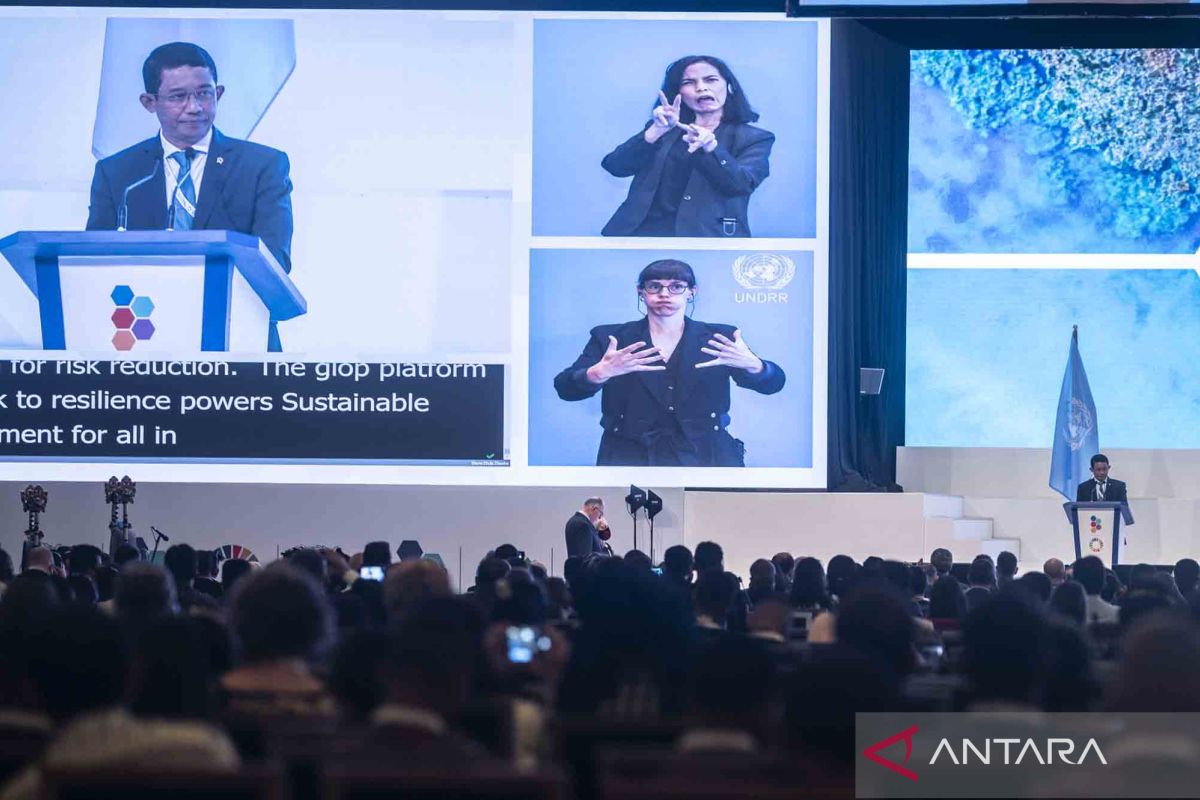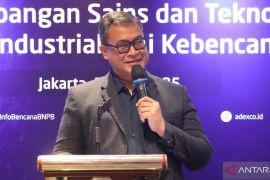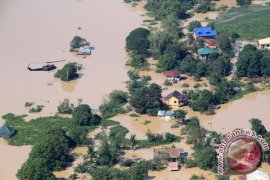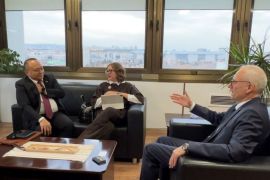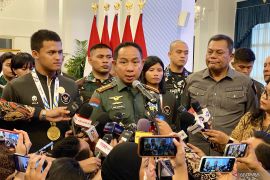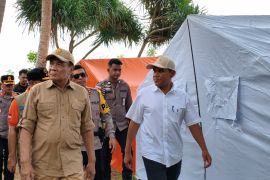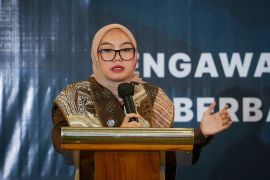One year from now, we will meet in New York for the midterm review of the Sendai Framework for Disaster Risk Reduction. Let us accelerate our efforts to achieve the priorities of the Sendai Framework ... understanding risk, planning for risk, and redBadung, Bali (ANTARA) - The 7th session of the Global Platform for Disaster Risk Reduction (GPDRR) took place amid global recovery from the COVID-19 pandemic, which has shown how underlying vulnerabilities and inequalities can have catastrophic consequences for the most exposed people across the world.
The GPDRR is a premier global forum for discussing the Sendai Framework for Disaster Risk Reduction, also known as the Sendai Framework.
The framework, which has been ratified by 187 countries, aims to serve as a global reference for reducing disaster risks around the world in the future.
The Sendai Framework is the first agreement made after the 2015 world sustainable development agenda that focuses on securing global commitment and action for reducing disaster risk. The agreement has been in effect since 2015 and its targets are hoped to be met by 2030.
Currently, the world is standing at a pivotal moment when it comes to delivering on the policy commitments agreed to in 2015 and stipulated in the framework.
Therefore, the UN General Assembly (UNGA) has decided to hold a “midterm review of the implementation of the Sendai Framework 2015–2030.”
President of the 76th Session of the UNGA, Abdulla Shahid, at the opening ceremony of the 7th session of the GPDRR, stressed the need to accelerate the achievement of the Sendai Framework’s priorities as one of the main agendas of this year's GPDRR to achieve resilience and readiness to face future disasters.
"One year from now, we will meet in New York for the midterm review of the Sendai Framework for Disaster Risk Reduction. Let us accelerate our efforts to achieve the priorities of the Sendai Framework ... understanding risk, planning for risk, and reducing risk," Shahid said.
This year’s GPDRR included three plenary sessions on the midterm review of the Sendai Framework (MTR SF).
The first MTR SF plenary was focused on global financing frameworks and macroeconomic governance to address risk and build resilience.
Related news: GPDRR meeting proves that world can unite amid conflict: Official
The second MTR SF plenary was focused on the multi-hazard nature of risk that governments and stakeholders face in order to reach global goals, including those set under the Paris Agreement and the 2030 SDGs.
Meanwhile, the third MTR SF plenary was focused on rethinking sustainable development and investment with strategic foresight for building resilience.
"The results of those plenaries will be an important input for the midterm evaluation of the Sendai Framework," said Mami Mizutori, head of the United Nations Office for Disaster Risk Reduction (UNDRR), an agency tasked with monitoring the implementation of the Sendai Framework.
Those plenaries will form a central part of the consultations of the MTR SF, which will be included in a report on MTR SF. The report, in turn, will inform a high-level meeting of the General Assembly in New York on May 18 and 19, 2023.
Progress report
The midterm review itself has provided state and non-state stakeholders the opportunity to engage in moderated exchange and discussion, especially to report and take stock of progress in the framework's implementation.
“So, we are currently conducting a midterm review of the Sendai Framework, and we will be learning from countries how they have progressed in the implementation of the framework," director of UNDRR, Ricardo Mena, told ANTARA here on Monday (May 23, 2022).
Related news: 15 COVID-19-positive people at GPDRR handled properly: Task Force
Mena also shared information about the progress made by countries in achieving the targets of the framework, especially target G.
The Sendai Framework puts forward seven global targets, including Target G, which aims to substantially increase the availability of and access to disaster early warning systems (EWS) and disaster risk assessment and information for communities by 2030.
"From what we can see at the Multi-Hazard Early Warning System (MHEWS) risks information and assessment, and we can see from the countries we are reporting, only around 50 percent of the countries in the world are working to have MHEWS and that's obviously not enough," he said.
In fact, early warning systems can help save lives and they have been proven to be quite effective, he noted.
"But they don't solve the root problems that are related to the drivers of risks, which are poverty, migration, urban concentration of high density in very exposed areas, and many other aspects that need to be addressed in order to make it possible to reduce disaster risks," Mena explained.
In addition, the UNDRR has urged more countries to report on and improve the availability and access of their disaster early warning systems.
The UNDRR director said that so far, only 120 countries have reported on the progress of Target G of the Sendai Framework.
"There are still many countries that have ratified the Sendai Framework but have not yet reported on the achievement of their G targets. Of course, this needs to be improved," Mena added.
Regarding the availability and access to a disaster early warning system, he listed a number of achievements and evaluations related to Target G indicators.
About 77 percent of the countries that have ratified the Sendai Framework have indicated that they have information coverage on a disaster early warning system through local or national mechanisms, according to UNDRR.
"However, there are still 23 percent of countries that do not indicate that they have coverage of disaster early warning information," Mena noted.
Moreover, the UNDRR has noted that less than 50 percent of countries have reported that their local governments have plans for disaster early warning system actions.
Related news: Data collection vital in devising strategies for disaster resilience
"This is a bit worrying because currently, the percentage has dropped to only 46 percent," Mena pointed out.
He further revealed that less than 50 percent -- only 48 percent -- of countries have accessible, understandable, durable, and relevant information and disaster risk assessments.
Although there has been great progress in disaster risk reduction efforts, for example, in terms of access and the use of information and communication technology, there are still many challenges that need to be addressed in the global effort for disaster risk reduction, he remarked.
Bali Agenda
On Friday (May 27), the 7th Session of GPDRR concluded with the Bali Agenda for Resilience, which aims to keep the world from facing 1.5 disasters a day by 2030.
The United Nations disaster summit was a "wake-up call" to improve preventative measures and "stop the spiral of increasing disaster impact and risk.”
The UN forum concluded that more countries must “Think Resilience,” and urgently adopt and improve early warning systems to reduce the risks from an increasing number of disasters across the world.
Related news: BMKG head offers five formulas to build holistic disaster resilience
As part of the forum, representatives of at least 184 countries gathered in Bali to review efforts to protect communities from a rising number of climate hazards and other catastrophes around the world.
The 2022 GPDRR heard the reports of only 95 countries, who said they have multi-hazard early warning systems that give governments, agencies, and the general public notice of impending disaster, with coverage particularly low in Africa, Least Developed Countries, and Small Island Developing Countries.
Early warning systems were cited as a critical defense against disasters such as floods, droughts, and volcanic eruptions in a recent Global Assessment Report, which predicted 560, or 1.5 disasters a day by 2030 based on the current trajectory.
The Bali Agenda for Resilience came ahead of the 2022 International Day for Disaster Risk Reduction dedicated to early warning systems on October 13, and was presented at the end of the three-day Global Platform hosted by the government of Indonesia.
The meeting, which was the first international UN disaster forum since the start of the COVID-19 pandemic, also covered the midterm review of the UN’s Sendai Framework for Disaster Risk Reduction.
Related news: Deputy Minister reviews readiness of GWK for welcoming GPDRR delegates
In light of the pandemic, the Bali Agenda highlighted the need to reassess the way risk is governed and policies are designed as well as the types of institutional arrangements that need to be put in place at the global, regional, and national levels.
"Current approaches to recovery and reconstruction are not sufficiently effective in protecting development gains nor in building back better, greener, and more equitably," the summary said.
"Transformative lessons learned from the COVID-19 pandemic must be applied before the window of opportunity closes," it added.
Delegates gathered at the forum also shared the progress made since the last Global Platform in 2019, with a 33-percent increase in the number of countries now developing disaster risk reduction strategies and reporting through the Sendai Framework Monitor, which measures progress towards global targets.
"While there has been some progress, such as in the development of new financing mechanisms, and better linkages with climate action, the data still points to insufficient investment and progress in disaster risk reduction in most countries, especially in investing in prevention," according to the Bali Agenda for Resilience.
"Less than half of the countries reporting against Sendai Framework targets indicate having fit for purpose, accessible, and actionable disaster risk information," it noted.
The Bali Agenda for Resilience will be carried through to the 2022 United Nations Climate Change Conference (COP27), the G20, and the Midterm Review of the Sendai Framework.
Related news: GPDRR releases Bali Agenda for Resilience
Related news: Collaboration among countries can expedite disaster handling: BRIN
Editor: Fardah Assegaf
Copyright © ANTARA 2022
